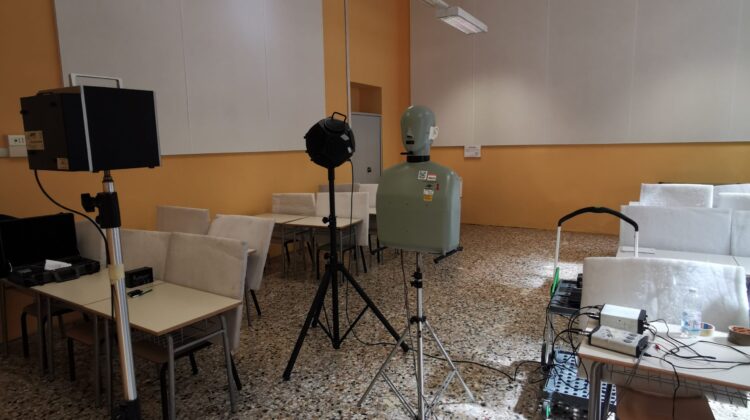
IO ASCOLTO (I LISTEN) is an innovative research project tested in Turin to improve children’s learning abilities at school and intended to combat specific learning disorders experienced by children with special education needs (SEN) such as dyslexia – the inability to read words and texts quickly and correctly – which, according to AID (Italian Dyslexia Association) estimates, affects around four out of 100 Italian students.
The project is funded by the Fondazione CRT and is being carried out by the Università degli Studi di Torino (Neuroscience, Surgical Sciences and IT Departments) and the Politecnico di Torino (Energy Department), in collaboration with the Istituto Nazionale di Ricerca Metrologica (INRIM) and the Direzione Didattica Roberto D’Azeglio.
What does IO ASCOLTO aim to achieve?
Scientific research carried out to date within the IO ASCOLTO project has highlighted the importance of the acoustic property of speech clarity (C50) in learning processes, as it has been found to be significantly correlated with cognitive abilities linked to reading [1].
Poor acoustics in classrooms lead to a 10% deterioration in speech intelligibility in children during their first few years of school, with potential negative effects on their auditory, phonological and reading skills (please see Ecophon’s research summary on the effects of poor acoustics on children here). On the basis of that knowledge, it is therefore essential to improve the acoustic characteristics of classrooms, not only to increase speech intelligibility, but also to strengthen cognitive skills related to auditory and visual processes and reading skills.
Numerous primary schools in Turin have participated in the IO ASCOLTO project over the years. In some of them, the acoustic quality of the classrooms was found to be adequate due to corrective measures already implemented over the years, but most of the classrooms involved were acoustically deficient and therefore inadequate to support learning processes.
A case in point: refurbishing the L. A. Muratori primary school in Turin
During the 2017/2018 school year, the IO ASCOLTO project progressed with Ecophon in Italy as a sponsor. In particular, we supplied the material for the acoustic treatment of two classrooms involved in the project free of charge, basing the acoustic correction on the criteria of maximising speech clarity and reducing reverberation time.
The acoustic treatment was carried out in the L. A. Muratori primary school in Turin, with a particular focus on two classrooms located on the ground floor of the building and overlooking a busy city street, which were allocated to the youngest classes (found to be among the most susceptible to the acoustic environment) after the acoustic correction refurbishment.
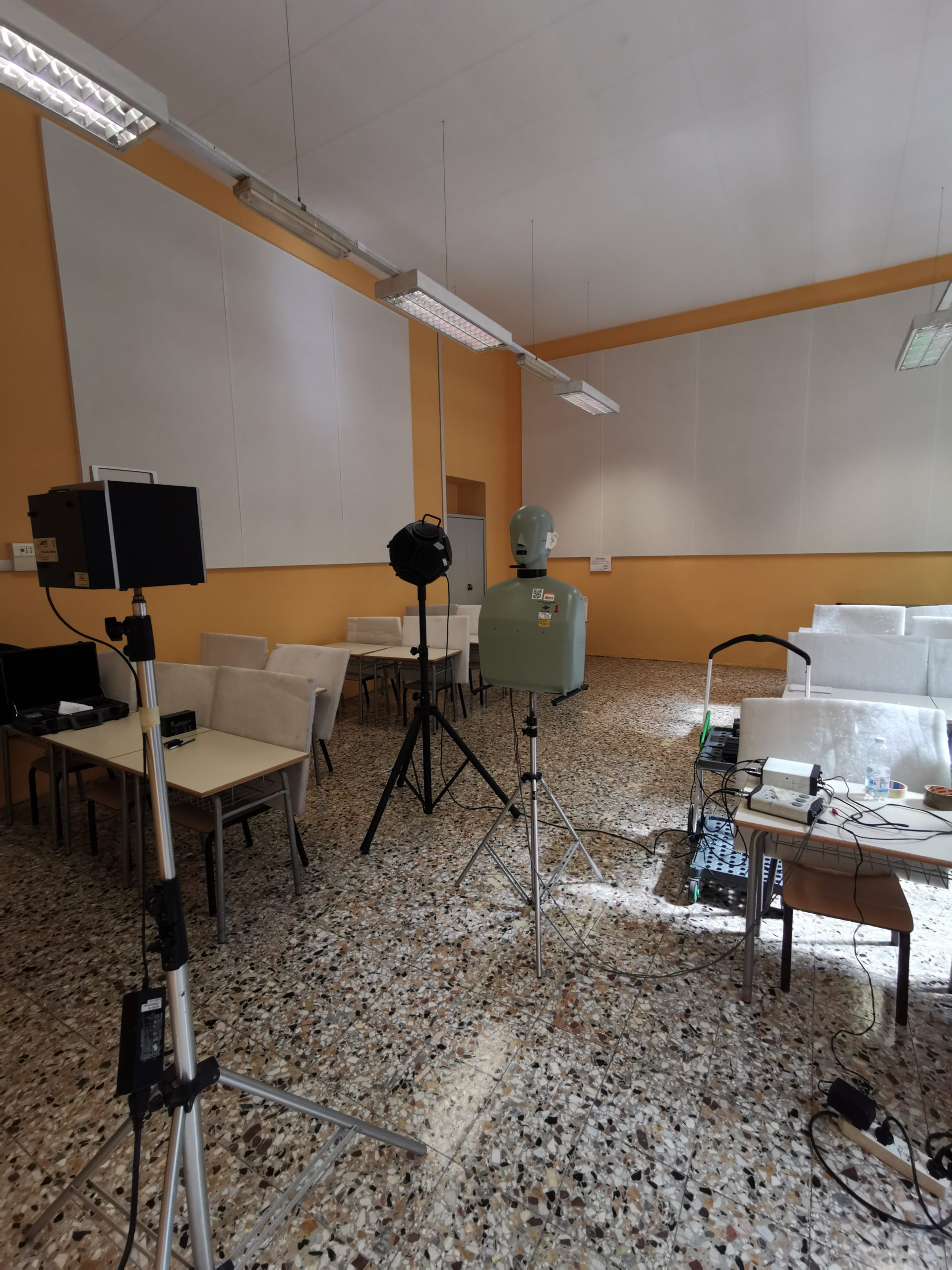
The acoustic design was also drawn up in accordance with the structural requirements to be met. In order to guarantee the safety of the students and users of the classrooms in general, structural checks were carried out on the ceilings of the classrooms involved to ensure that the acoustic correction could also be carried out on the classroom ceilings, and not just the side walls. The safety of the project was guaranteed by the use of a shatterproof suspended ceiling, to which sound-absorbing panels were anchored for acoustic correction.
The design solution specifically included the installation of the following systems:
- Gyproc Fireline shatterproof system in combination with Ecophon Master™ F sound-absorbing system
- Akusto™ Wall A wall sound-absorbing systems, using acoustic panels fitted to two perpendicular walls to minimise the impact of sound reflections.
The solution for the suspended ceiling led to the combination of two existing solutions, combining shatterproof and sound-absorbing characteristics. A unique system was created that has been laboratory tested with excellent results, both in terms of resistance to falling loads and from an acoustic point of view.
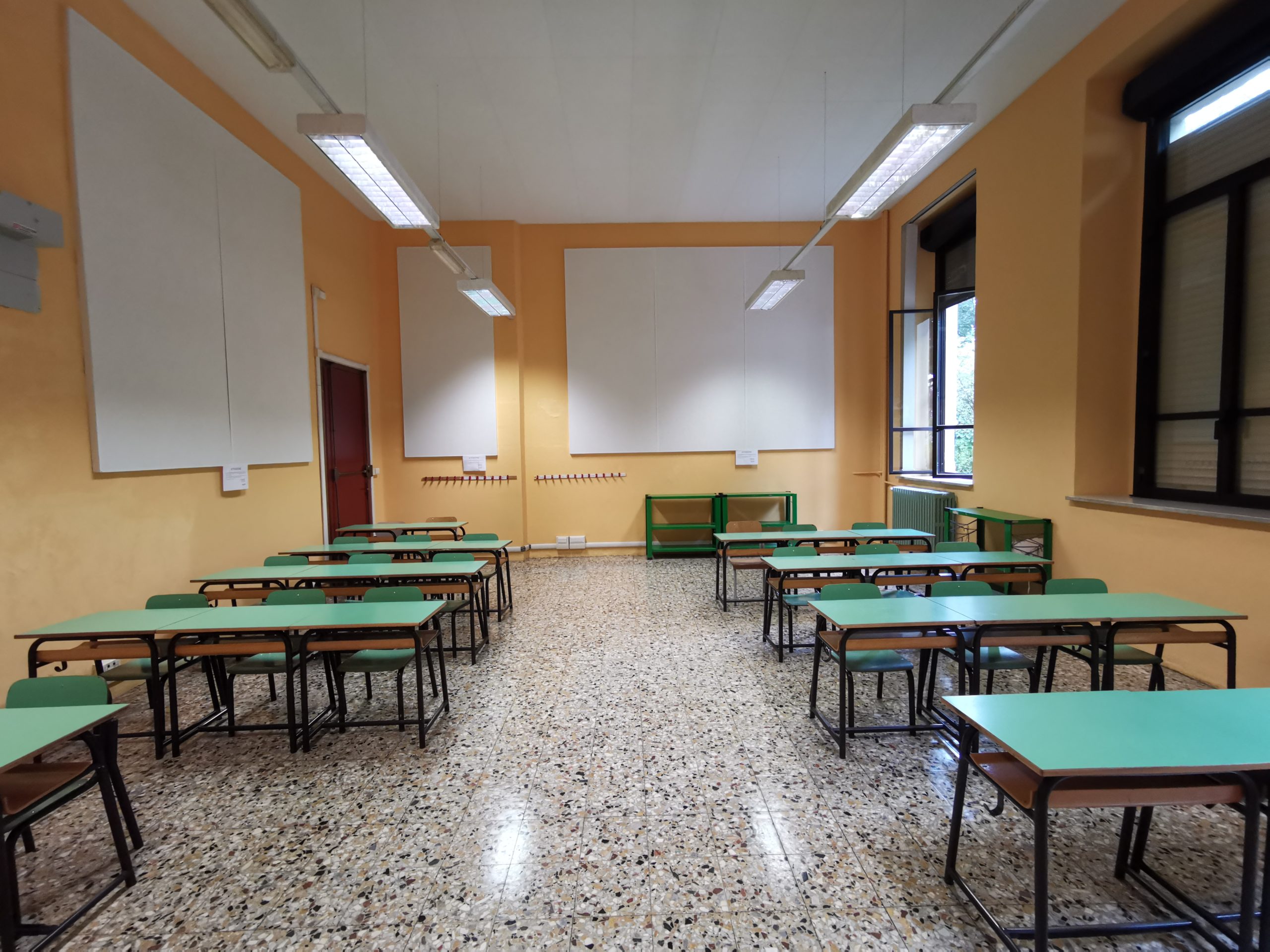
Measurements
Reverberation time
The conditions before the refurbishment was carried out were measured when the classroom was empty in order to assess the acoustic response on which to base the intervention project. Those measurements resulted in an extremely high reverberation time (T20) of 2.0 s in the 250–2000 Hz frequency range (Figure 1).
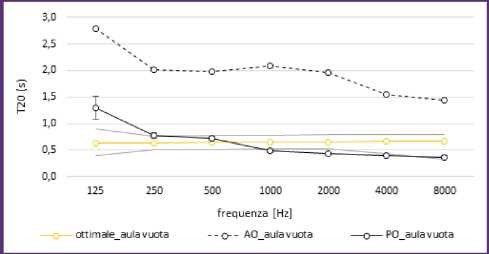
Thanks to the acoustic correction work that included the treatment of the classroom side walls and ceiling, the T20 value measured after the refurbishment had been carried out in the same empty classroom conditions was 0.6 s (Figure 1), making a huge improvement. Using sound-absorbing panels to simulate the additional absorption provided by the presence of children in the classroom, the T20 value measured after the work had been carried out was 0.5 s (Figure 2). This result complies with the requirements of the most recent standard for classroom acoustics, UNI 11532-2:2020 [2] published in March 2020, which indicates optimum reverberation times according to classroom volume and specific use.
In the specific case of the rooms in question, which have a volume of 245 m3 after the acoustic refurbishment, conducting traditional teaching activities requires an optimum T20 of 0.6 s +/- 0.12 s for the 250–2000 Hz frequency range.
In light of the latest regulatory guidance, which adheres to international standards, the project therefore produced a successful outcome during testing.
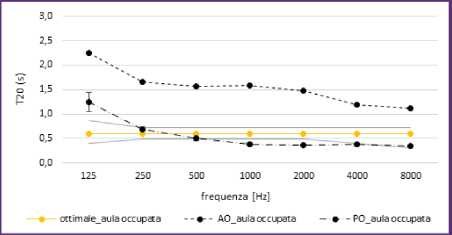
Speech clarity (C50)
The speech clarity parameter (C50) was measured after the refurbishment had been carried out to assess the effectiveness of the proposed acoustic treatment in simulated occupied classroom conditions. The measurement was taken at three specific points in the room, as required by UNI 11532-2:2020, representing the students seated in the first, middle and last rows of the room, in line with the position typically assumed by the teacher during teaching.
The instrumentation used consisted of a directive source (Talkbox model by NTi Audio) for measuring the C50, in order to replicate the voice signal emission diagram, in an omnidirectional dodecahedron for measuring the T20, and in a class-1 calibrated sound level meter as a receiver in both cases. The Talkbox was placed in correspondence with the position typically assumed by the teacher and at a height from the floor equal to 1.5 m, while the sound level meter was positioned in line with the source in correspondence with the first row of benches, then the row central and finally of the last row.
The results, shown separately for each receiver (Figure 3), reveal that in the 500–2000 Hz range, the average C50 clarity is always higher than that required by the standard, which calls for a level of > 2 dB to ensure optimum listening conditions for classroom learning.
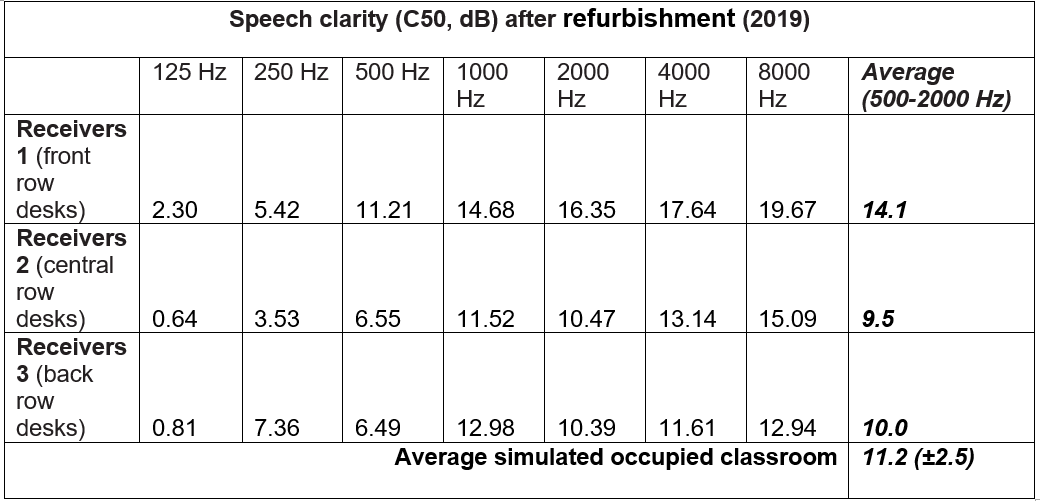
A sound effect for all children in the classroom
By successfully meeting the Italian acoustic standards for schools, this refurbishment shows that ideal conditions for creating inclusive and optimized listening environments for children to learn in can be guaranteed in just a few simple steps. We hope this will serve as a model for other schools and Italy to follow in future.
For any questions about classroom acoustics in Italy, please contact the author, Concept Developer Cristina Carrus at [email protected]. Please note this article was revised by Giuseppina Puglisi of Politecnico di Torino.
Sources:
[1] Puglisi, G. E., Prato, A., Sacco, T., & Astolfi, A. (2018). Influence of classroom acoustics on the reading speed: A case study on Italian second-graders. The Journal of the Acoustical Society of America, 144(2), EL144-EL149.
[2] Astolfi, A., Parati, L., D’Orazio, D., & Garai, M. (2019). The new Italian standard UNI 11532 on acoustics for schools. Universitätsbibliothek der RWTH Aachen.

